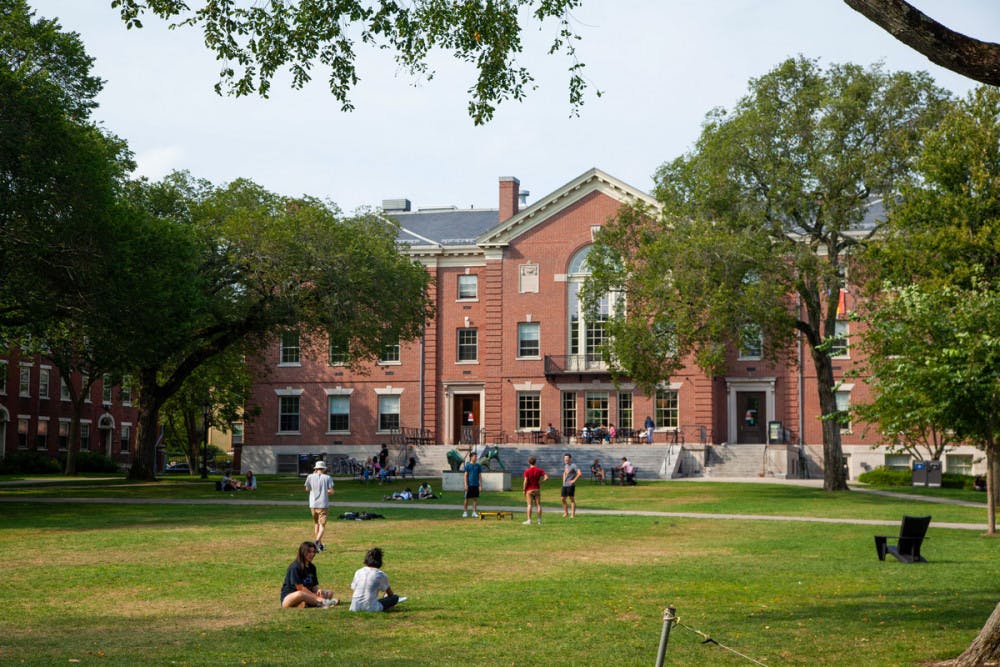Graduate Orientation returned with in-person events running from Aug. 31 to Sept.1 after a fully virtual orientation last year. This year’s programming was open to first-year and second-year students to accommodate second-year students who had missed out on in-person orientation last year.
On top of the All-Student Orientation programming, serving all first-year and second-year graduate students, the Graduate School also offered International Orientation, held primarily virtually from Aug. 25 to Aug. 27, and Student of Color Orientation, held in person on Aug. 30.
The return to in-person programming gave new graduate students a better chance to acclimate themselves to Brown’s community, said Maija Hallsmith, Graduate School program assistant for diversity initiatives, who helped plan and run Student of Color Orientation. In addition to social events, the Student of Color Orientation included a welcome dinner and keynote speaker on the evening of Aug. 29.
“One of the biggest pros about orientation in general, and obviously also about Student of Color Orientation, is that it’s an opportunity not only to learn about the university that you’re going to, but also to meet people,” Hallsmith said.
At All-Student Orientation, grad students were offered Brown merchandise and were invited to social events including a game night, speed networking and a back-to-school social on Ruth J. Simmons Quadrangle, according to Mac Carley GS, Graduate Student Council vice president of advocacy.
Beyond social events, orientation programming included campus tours, sessions on diversity and inclusion and student and faculty panels.
Within the Student of Color Orientation, Hallsmith said that the in-person format allowed for more events than last year.
“Last year we had a much shorter schedule and fewer options, which wasn’t great, but was just more realistic for trying to engage people over Zoom,” she said.
Carley said that besides some COVID-19 restrictions, this year’s programming reflected a return to normalcy, mirroring orientation prior to the pandemic.
“We would usually do the back-to-school social at a bar, but this year we decided to do it under a tent in one of the quads so it would be safer,” he said. “Otherwise, as far as activities, it all looks the same.”
Student of Color Orientation, according to Hallsmith, is meant to help students find their footing in both their academic and social lives, with events ranging from panels on how to keep track of academic milestones to sessions about social spots in Providence.
Hallsmith added that Student of Color Orientation began as a student-initiated event and is now an annual tradition.
“It actually was the brainchild of graduate students who had been at Brown for a few years and realized that there was a gap in terms of preparing students for coming to Brown and really feeling like they’re welcomed here and have a community,” she said.
Hallsmith said that Student of Color Orientation, like its predecessors, utilized student voices, with graduate students serving as the driving force in organizing events.
“Students were the ones who were planning the sessions, picking out the keynote speakers, helping us organize the schedule, packing folders, all of that kind of stuff, and it stayed that way,” she said.
“They are really the ones who dictate what is covered,” she added. “It’s nice in that way because I feel like it is pretty reflective of what students feel they need and what will best prepare them for coming into graduate school.”
One of those students is second-year PhD student Kimberly Meza GS, who applied to be a Student of Color Orientation assistant in part because last year’s virtual orientation made her realize how important the event is.
“With the original format, you can meet new students that you started school with,” Meza said. “That just wasn’t as present for us virtually.”
Meza said that Student of Color Orientation helps graduate students adjust to an unfamiliar academic setting. For example, Meza hosted a faculty panel on how to navigate the “ivory tower” — or a space of particular privilege — as a graduate student.
“We had faculty that identify as people of color come out with their experiences and what it looks like to be in a space like Brown, which is sometimes a bit of a culture shock for some of us,” she said. “They gave very candid advice on how to navigate that.”
Following orientation, Carley said that GSC hopes to continue to hold community-building events for graduate students, including another social toward the end of the semester, a distinguished speaker series and trivia nights.
“We’re just trying to put everything back as much as possible, especially on the social side, because that’s really been the missing piece during the pandemic,” he said. “As much as the virtual socials last year were nice, I know that people feel much better and more impacted by the in-person stuff.”
Caleb Lazar was the senior editor of data desk for The Brown Daily Herald's 133rd Editorial Board.





